Blood Red Skies is primarily concerned with the dogfighting of the prop-driven aircraft of World War Two. However, in the latter stages of the war the World’s first operational jet-powered fighter aircraft entered the fray, the Messerschmitt Me 262. Though its arrival was far too late to improve the fortunes of the beleaguered Luftwaffe, it did set the precedent for future jet-powered aircraft…
Messerschmitt Me 262
The Messerschmitt Me 262 was the first operational jet-powered fighter aircraft in the world. Though design work began well before the commencement of World War II, problems with development – from the engines to interference from the highest command levels meant that the aircraft did not reach operational status until mid-1944, too late to make the required impact. The Me 262 was heavily armed and outperformed every Allied aircraft in terms of speed. It served in a number of roles such as light-bomber, reconnaissance and experimental night fighter, earning nicknames depending on its role; it was dubbed Schwalbe (swallow) in fighter versions, or Sturmvogel (storm bird) in fighter-bomber versions.
Though war records are sketchy (and prone to total bias), pilots of the Me 262 claimed more than 542 Allied aircraft downed. Its phenomenal speed made it an extremely difficult target to intercept, however at lower speeds the 262 suffered from diminished performance due to the limitations of thrust provided by the early jet engine. Allied pilots soon learned to take advantage of this trait by attacking the aircraft at its most vulnerable during take-off and landing. Whilst airborne, Me 262 pilots were relatively safe from Allied aircraft provided they did not get drawn into low-speed manoeuvring contests.
In targeting enemy bombers, new tactics needed to be developed. Head-on attacks would not work, as the closing speed did not pair well with the rate of fire of the nose-mounted Mk 108 cannons. When engaging bombers, Me 262 pilots developed a ‘broadside’ attack approach.
These new tactics can be reflected in Blood Red Skies gameplay. Using the positive Jet trait, an Me 262 immediately gains an Advantage level on activation. Combined with a high speed, this gives jet aircraft the kind of tactical flexibility that prop-driven pilots could only dream of. This outstanding mobility allows jet pilots to keep their distance, using their free advantage to either dive or manoeuvre. A pair of jets can use a series of long, scissoring passes to disrupt enemy formations and pick off unfortunate aircraft.
Into The Jet Age
The effect of the 262 on the outcome of the war was compromised by its late arrival. By 1944, German armament production had shifted to more easily producible, and cheaper aircraft. Only a small number of Me 262s saw service, with reportedly only a maximum of 200 operating at any one time. Nevertheless, the aircraft massively influenced post-war military jet development, with captured examples being extensively tested by the post-war major powers.
The Korean War saw these labours come to fruition as pilots of the Soviet Union clashed with US pilots over what came to be known as MiG Alley!
MiG Alley!
“MiG Alley” was the name given by the United Nations (UN) pilots to the northwestern portion of North Korea, where the Yalu River empties into the Yellow Sea. The newly revised Mig Alley! set contains four superbly detailed aircraft in Warlord Resin, two MiG-15s and two F-86 Sabres (remastered from their original release for greater historical accuracy), as well as all the aircraft cards, pilot discs, traits, doctrine and equipment cards you need to take your games of Blood Red Skies into the Jet Age!
Aircraft of MiG Alley!
The MiG-15
Unlike the Western allies, the Soviet Union did not have a domestic jet fighter program during the Second World War. What it did have was a huge amount of research and development completed by Nazi Germany, which was used to produce the MiG-9 – an unexceptional first-generation jet using reverse-engineered BMW jet engines. Despite Allied reservations, the Soviet Union acquired 25 Rolls Royce Nene jet engines, which when combined with the research on swept-wing aircraft obtained from the Germans, produced the MiG-15.
Armed with a pair of 23mm cannons and a single 37mm cannon in the nose, it proved to be a fantastic interceptor, able to shred enemy aircraft with a blizzard of high explosive shells. An interesting quirk of this pairing was that the two calibres had vastly different velocities, providing the unnerving experience of the faster 23mm shells passing over an aircraft, while the 37mm would pass under.
The MiG-15 was widely exported to Soviet client states and first saw service during the Korean War, where it completely outclassed the P-80 Shooting Stars and Gloster Meteors – eventually meeting its match when the F-86 Sabres joined the battle.
The F-86 Sabre
By 1951, the US domestic fighter jet program had already turned out some middling straight-wing designs – universally plagued with mechanical faults and reliability issues. While the P-80 Shooting Star and F-84 Thunderjet were sufficient for ground attack work, they were unable to stand up to the lightning-fast MiG-15s.
The F-86 Sabre was the first aircraft to benefit from Operation Paperclip – a program employing German scientists to further develop the projects they’d worked on under Hitler’s regime. Along with jet engines and aircraft, it also continued the German’s ballistic missile program – resulting in the American space vehicles and nuclear missiles.
Early F-86s were still unable to match the MiG-15 pound-for-pound. They could potentially out-dive them, but they could still be outmanoeuvred. The upgraded F-model closed the gap and allowed the US to dominate the skies over the Korean battlefields.
The F-80C Shooting Star
A single-seat fighter-bomber, the Lockheed F-80C was a later production version of the P-80, the original designation denoting pursuit. However, with changes to the American system of designation in 1947, the Shooting Star would be re-designated as an ‘F’, a fighter. The Shooting Star was designed in fewer than 6 months around the British Halford H.1 engine and first flew in 1944, with P-80s flying under combat conditions in Italy the next year.
By the time of the Korean War, the aircraft was considered somewhat obsolete but was at the forefront of the initial sorties across MiG Alley, of which 1,500 flights were made in the first four months alone. It was on 8 November 1950 that a Shooting Star claimed the first MiG-15 shot down, thought to have been the first ever instance of jet-to-jet combat.
The F9F Panther
The F9F Panther was Grumman’s first production jet fighter, used extensively during the Korean War. It proved one of the United States Navy’s first successful carrier-borne jet fighters and was the first jet fighter to be used by the Blue Angels aerobatics display team.
The F9F would remain the primary US Navy and USMC jet fighter and ground-attack aircraft of the Korean War, flying around 78,000 sorties in total. The Panther claimed the first US Navy aerial victory of the war against a piston-engined Yak-9 in July 1950.
In one little-known instance, a single Panther shot down four MiG-15s in a 35-minute period, a remarkable feat for pilot Lt Royce Williams. This was in spite of the Panther’s relatively poor speed when compared to the nimble MiGs.
Other notable pilots of Panthers in Korea include the first man on the moon, Neil Armstrong (who in fact bailed out during a combat mission when his aircraft was brought down by wire strung out across a valley), as well as fellow astronaut John Glenn and baseball star Ted Williams.
You’ll find the rules for incorporating jets into your games of Blood Red Skies in the Air Strike! compendium. To take your MiG Alley! games even further with more scenarios and the introduction of rules for early guided missiles, look to the second compendium, Wing Commander!
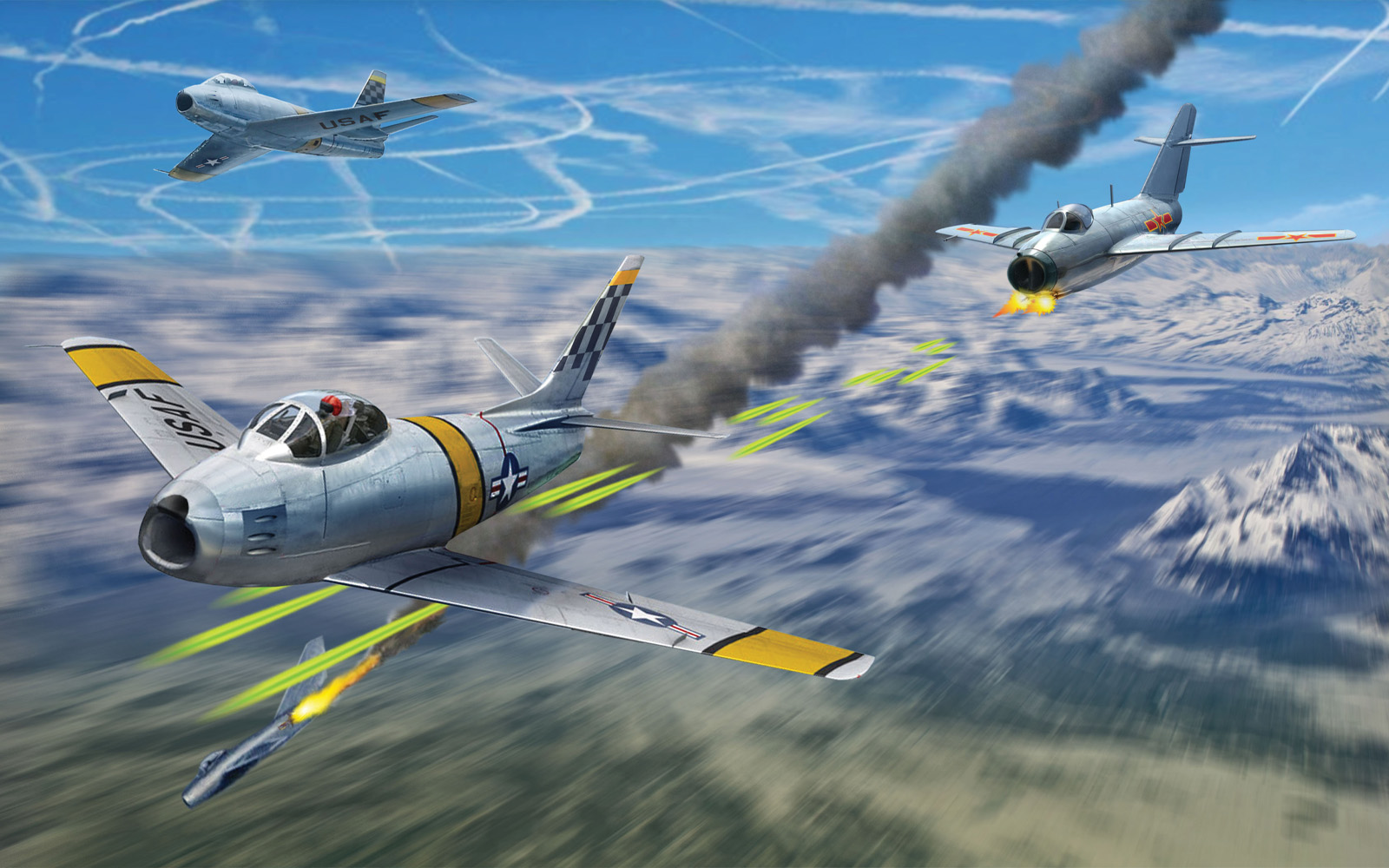
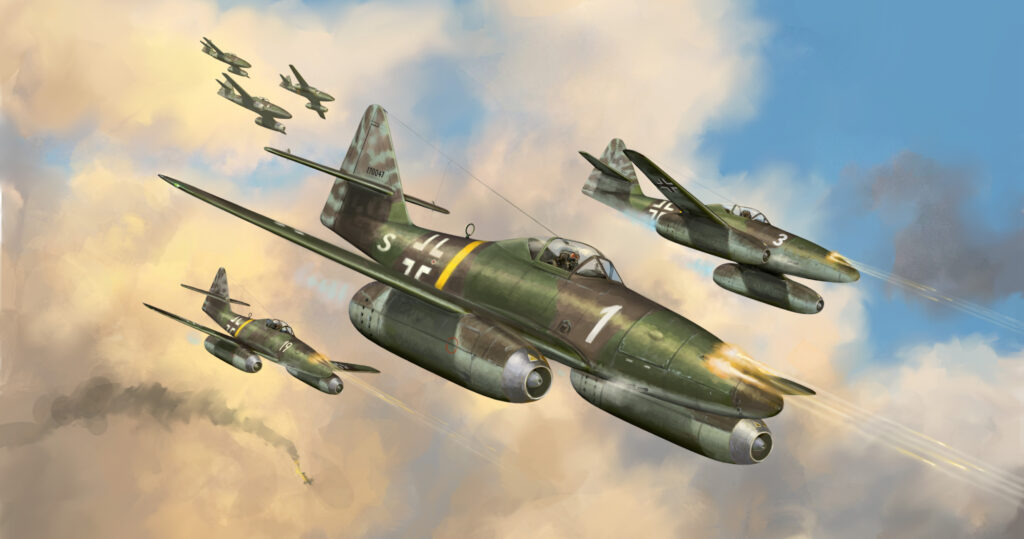
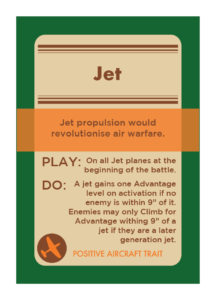
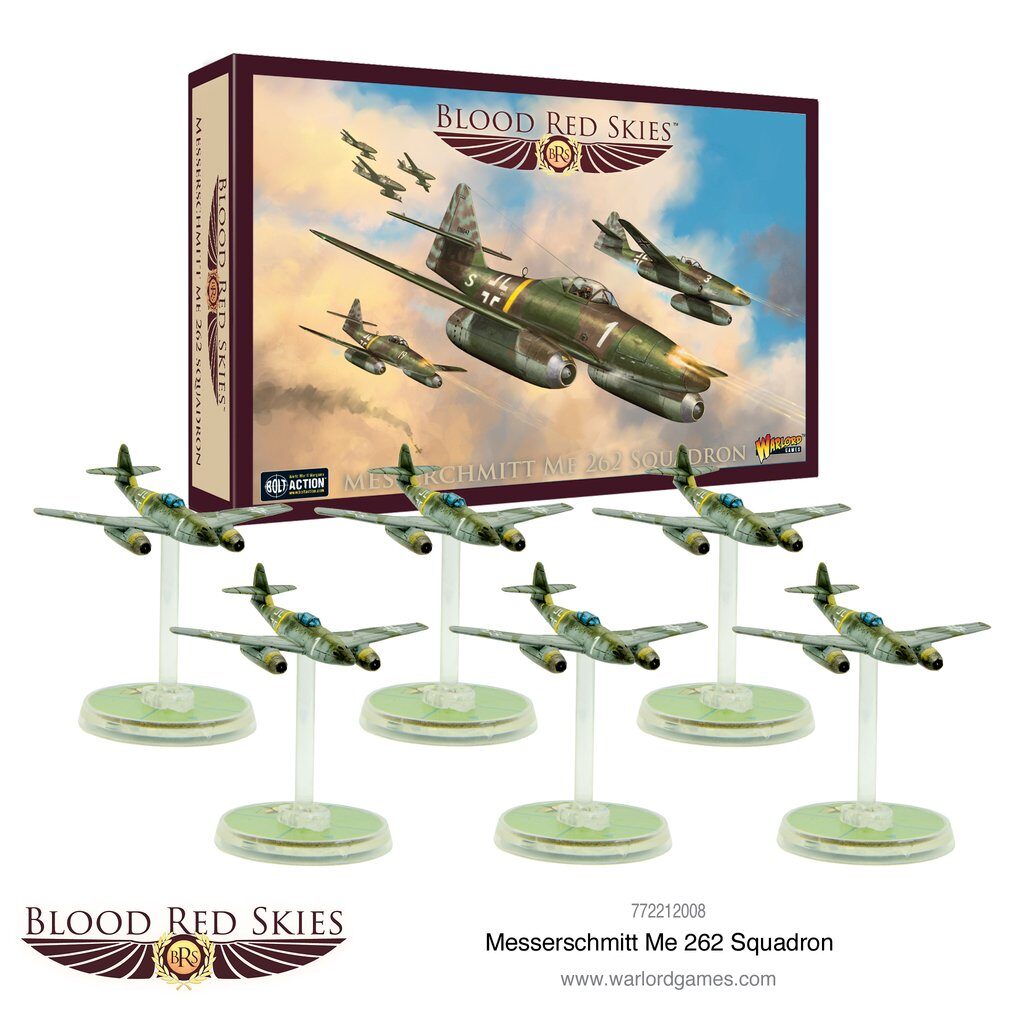
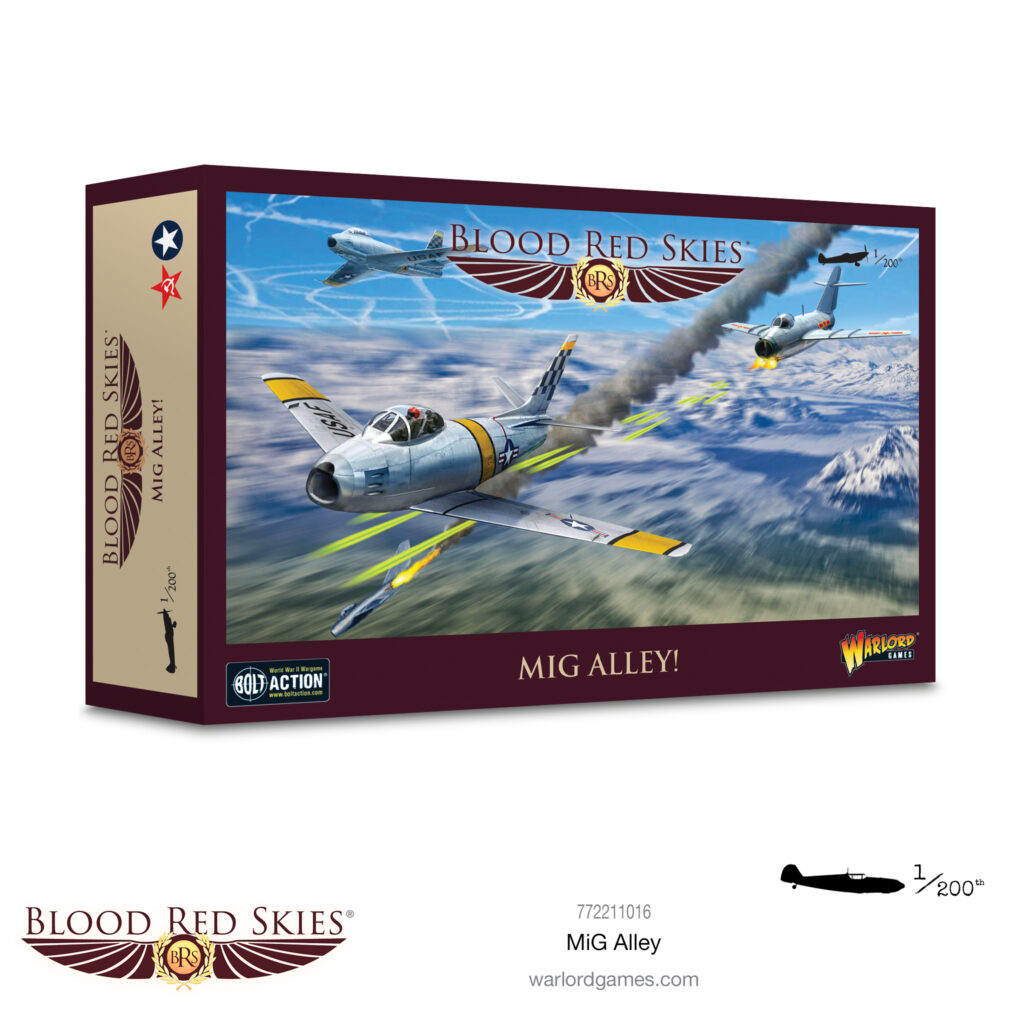
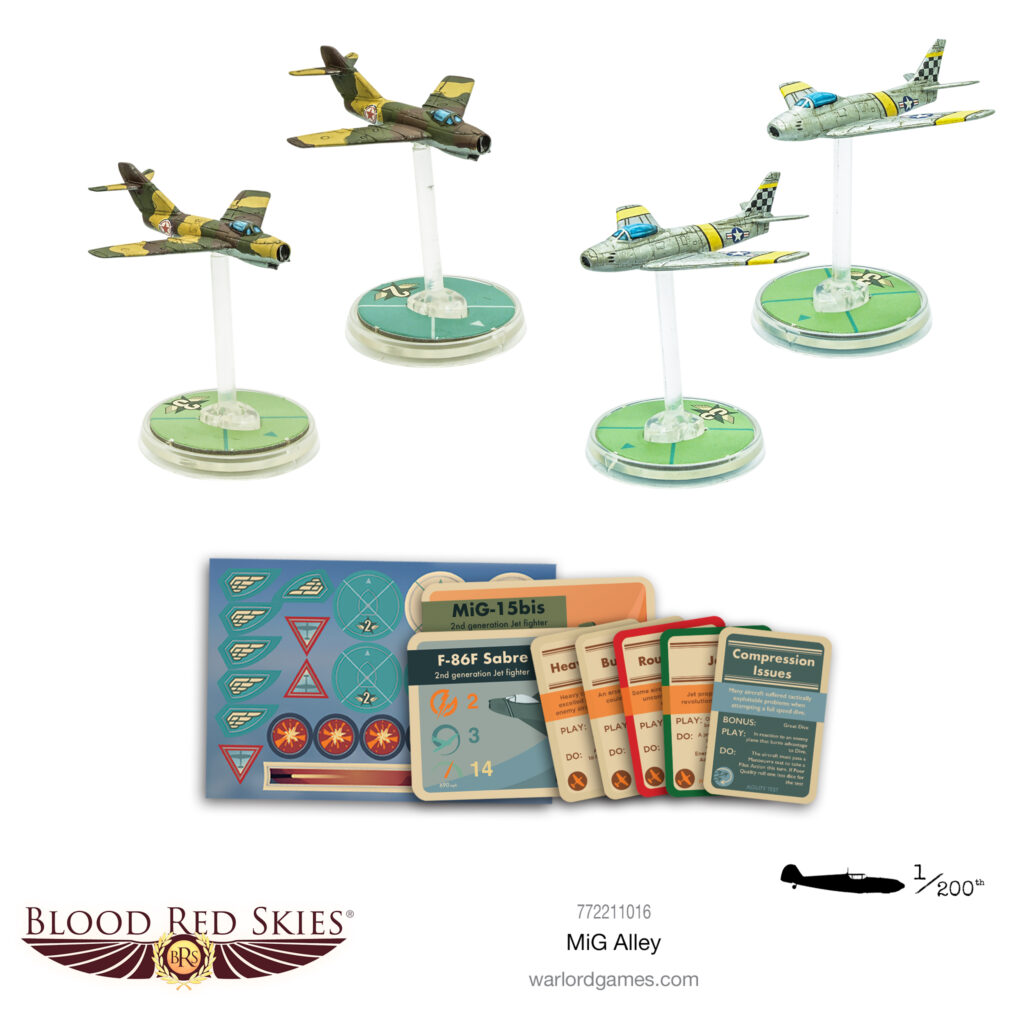
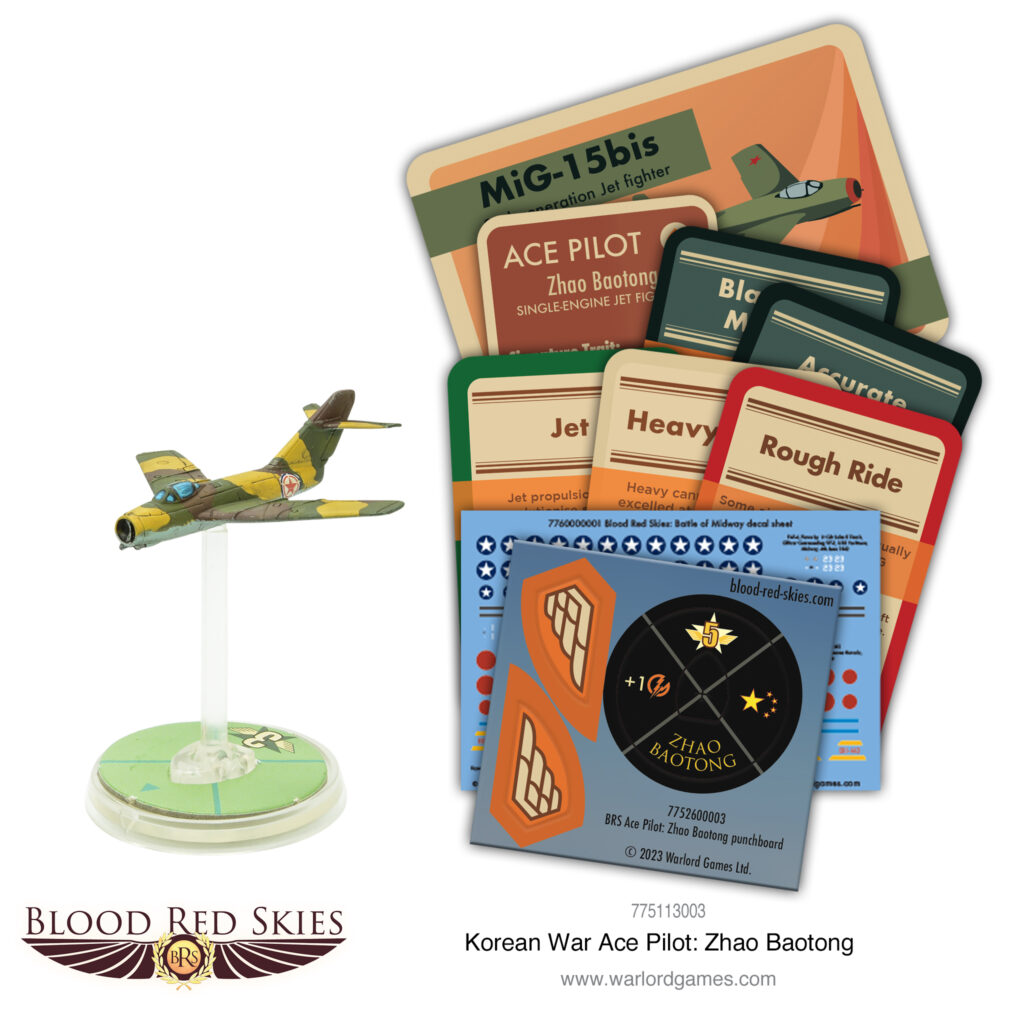
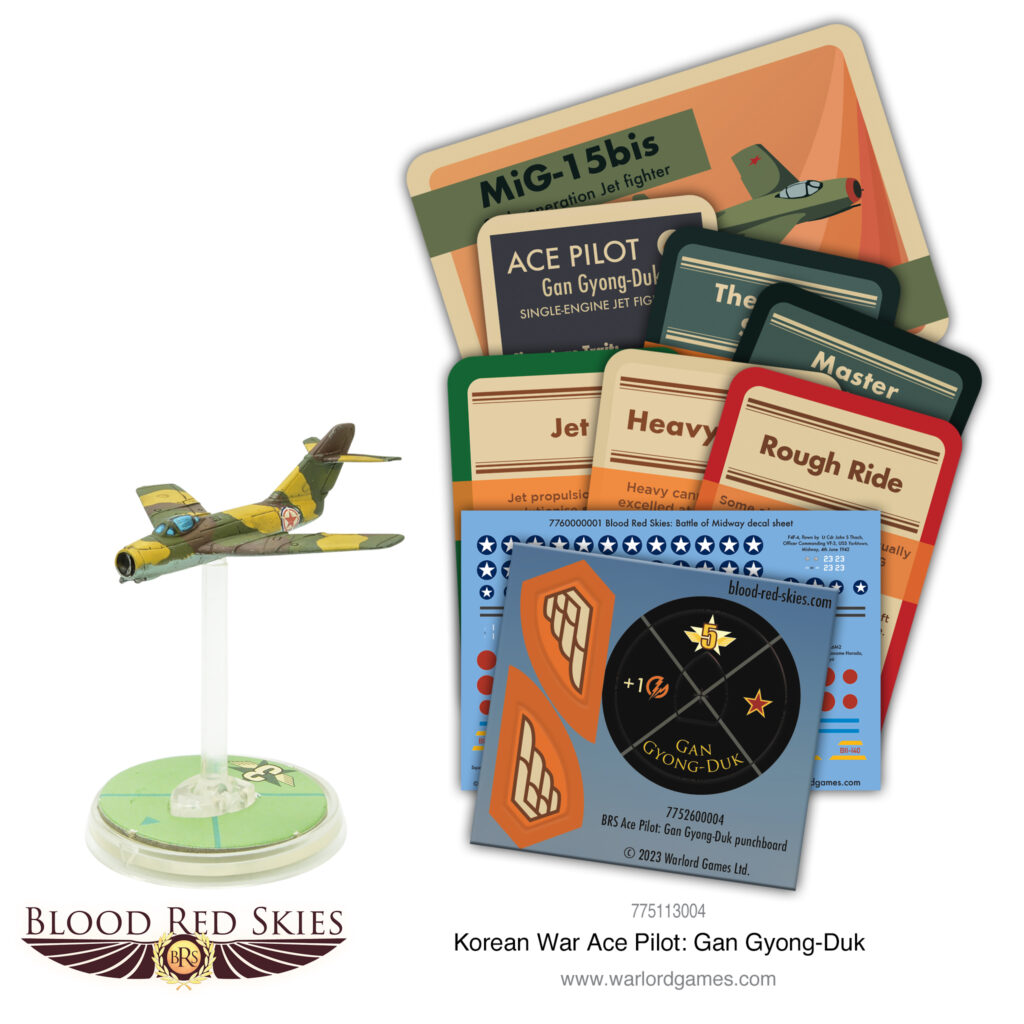
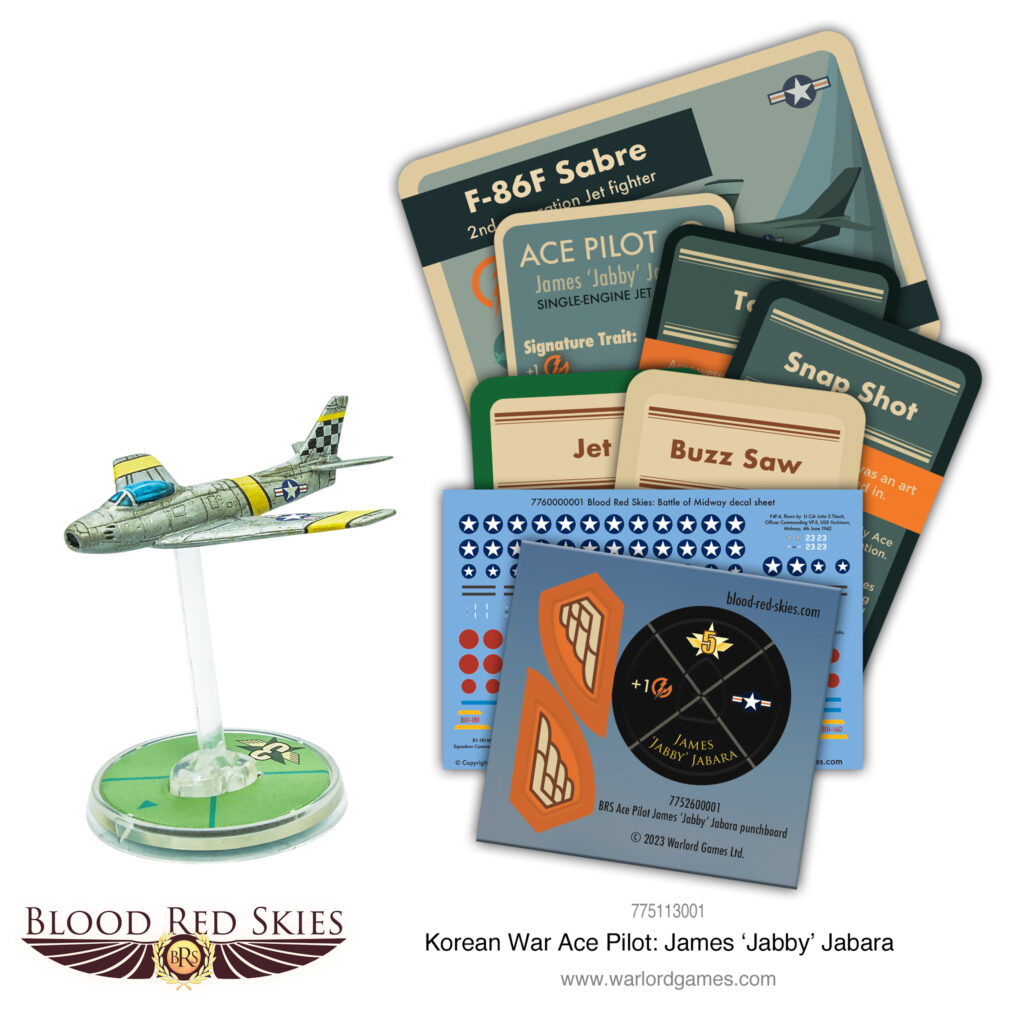
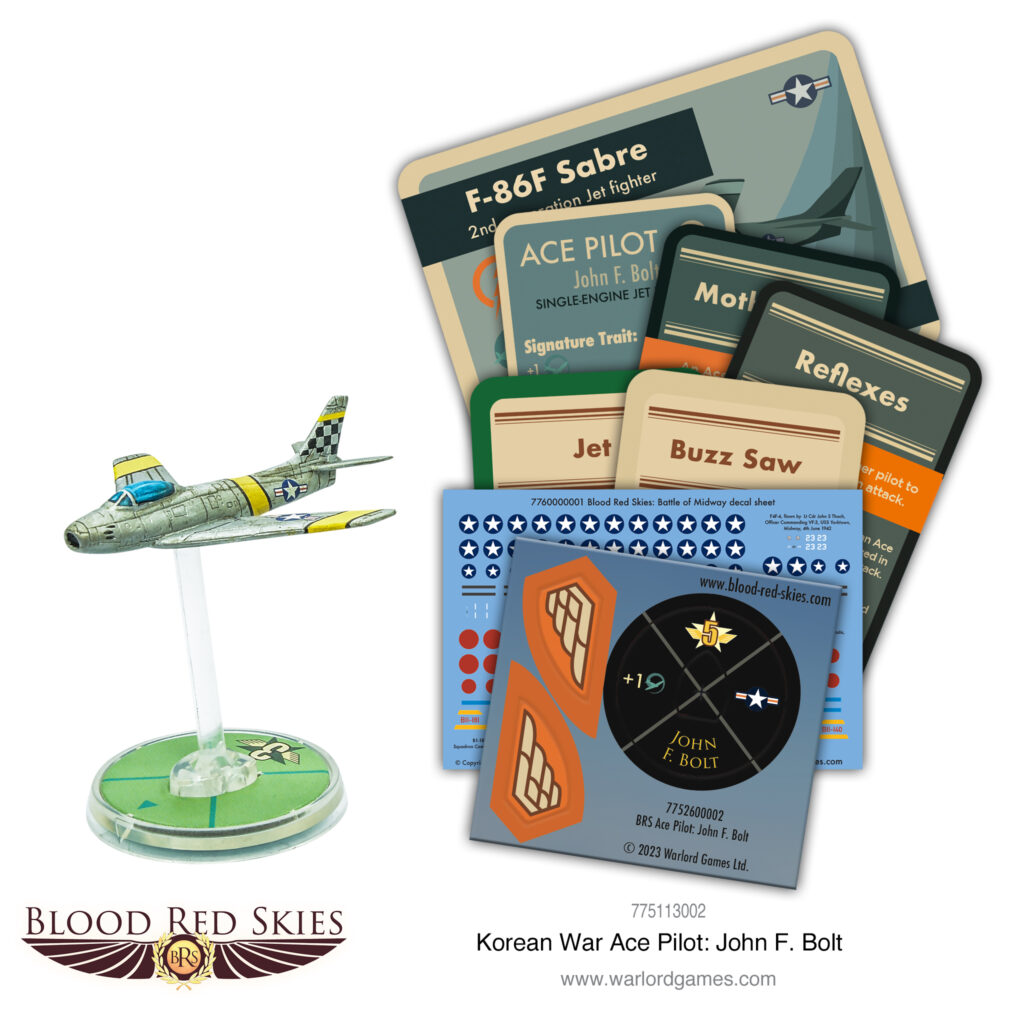
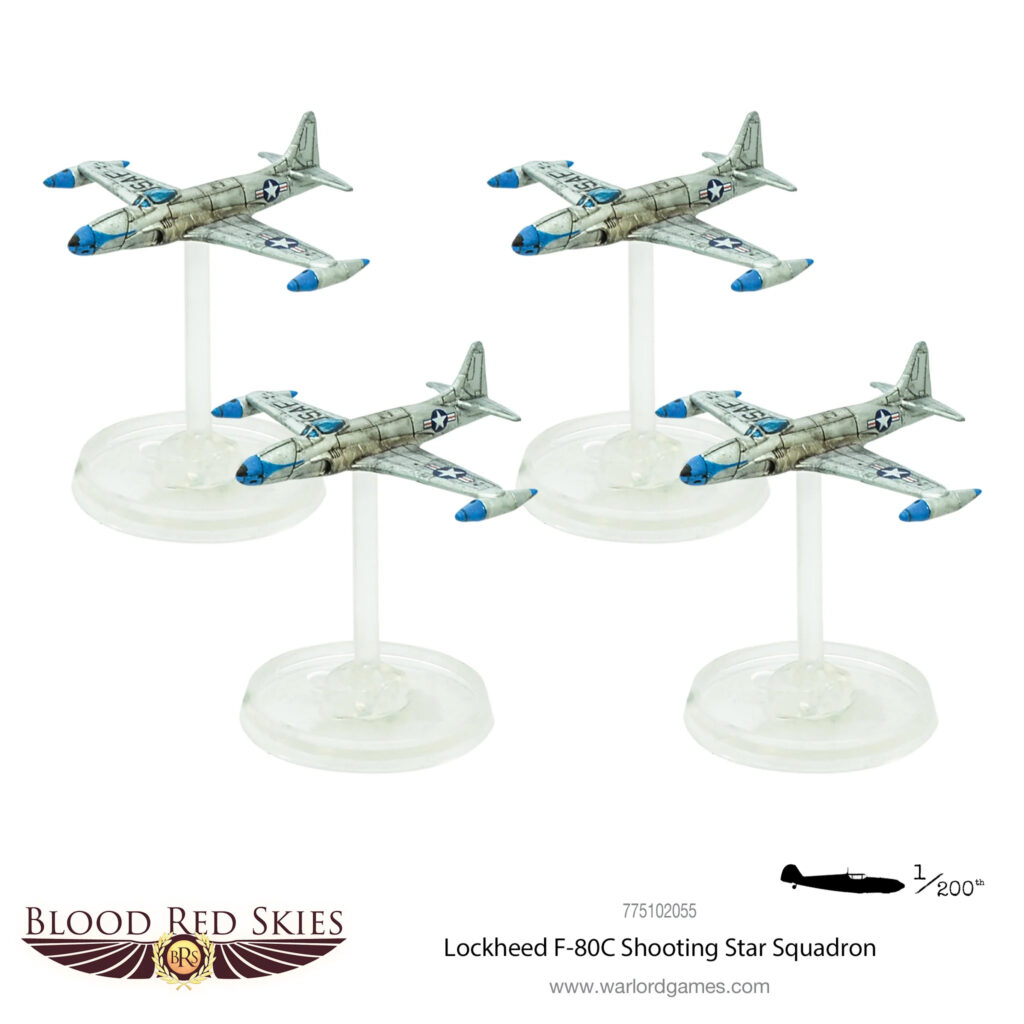
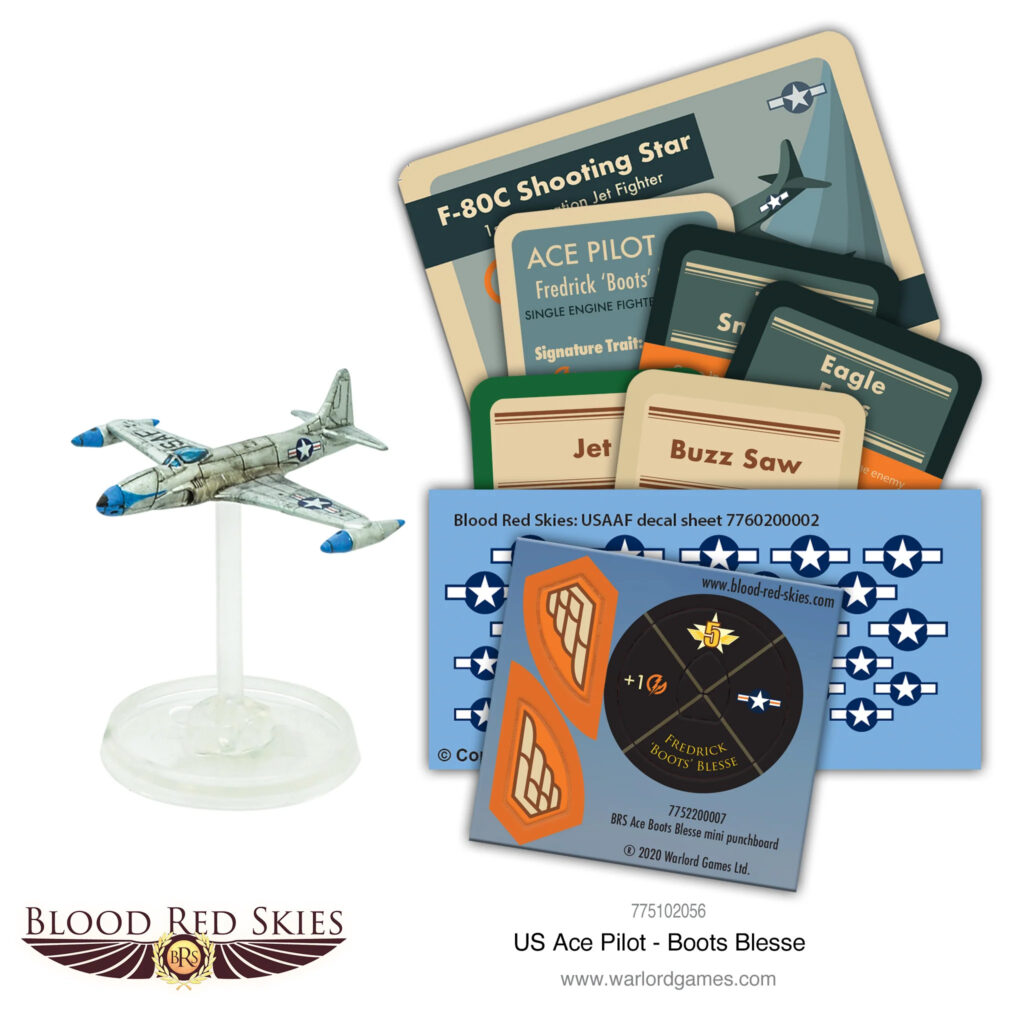
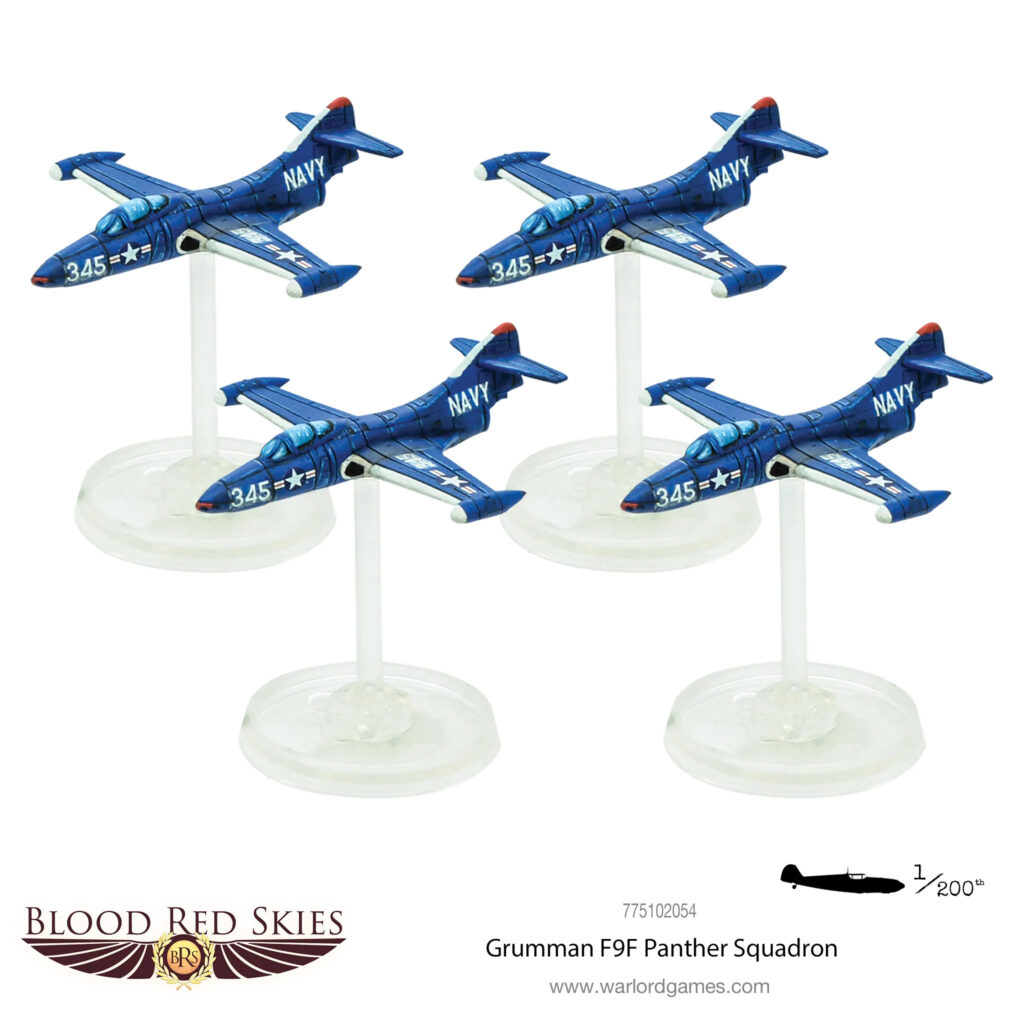
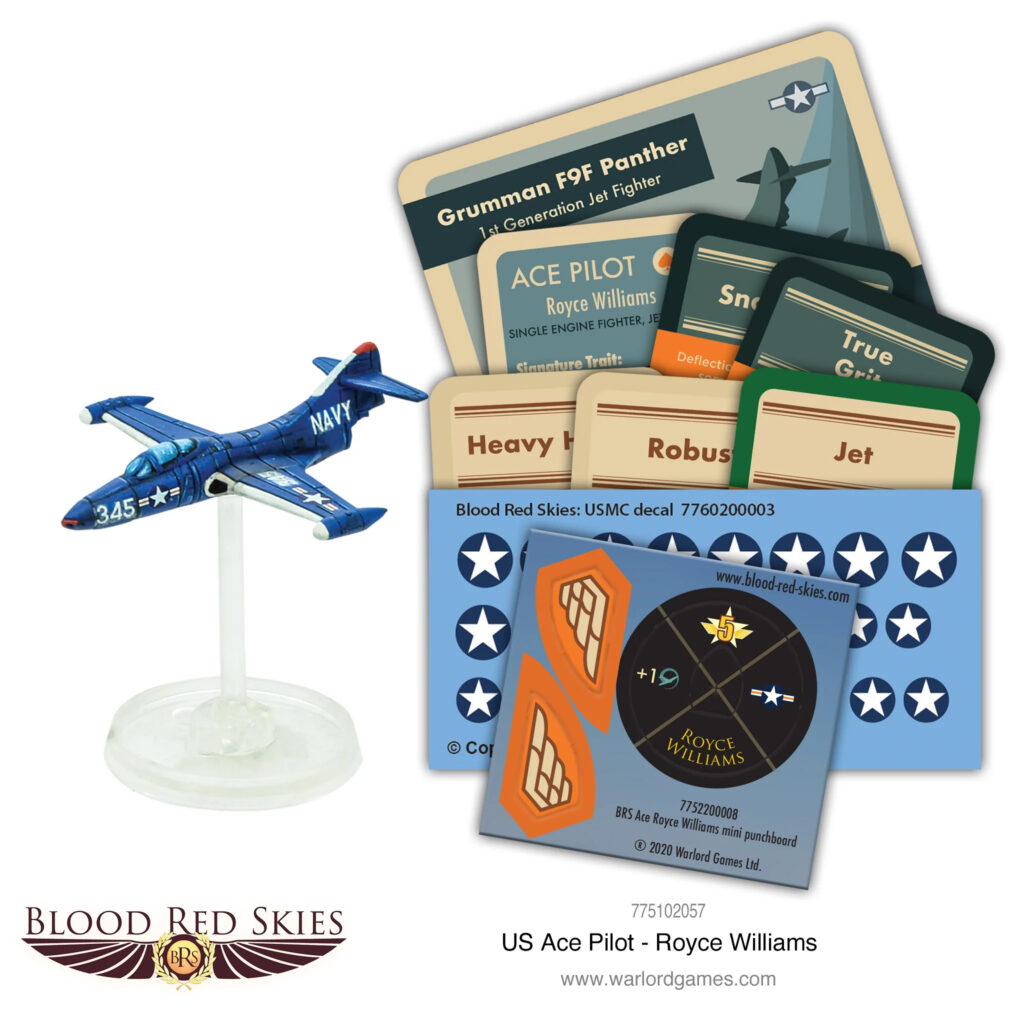
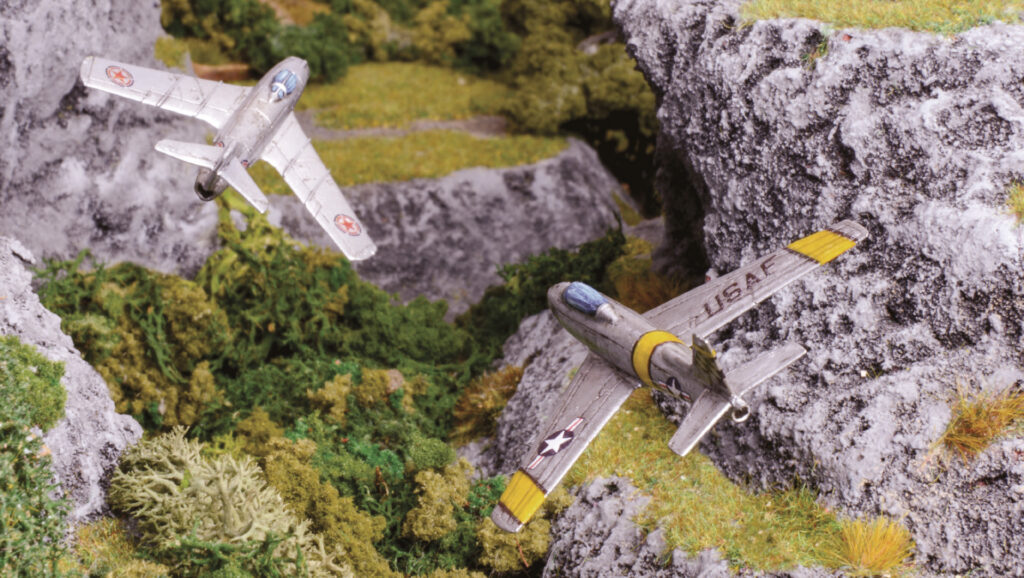
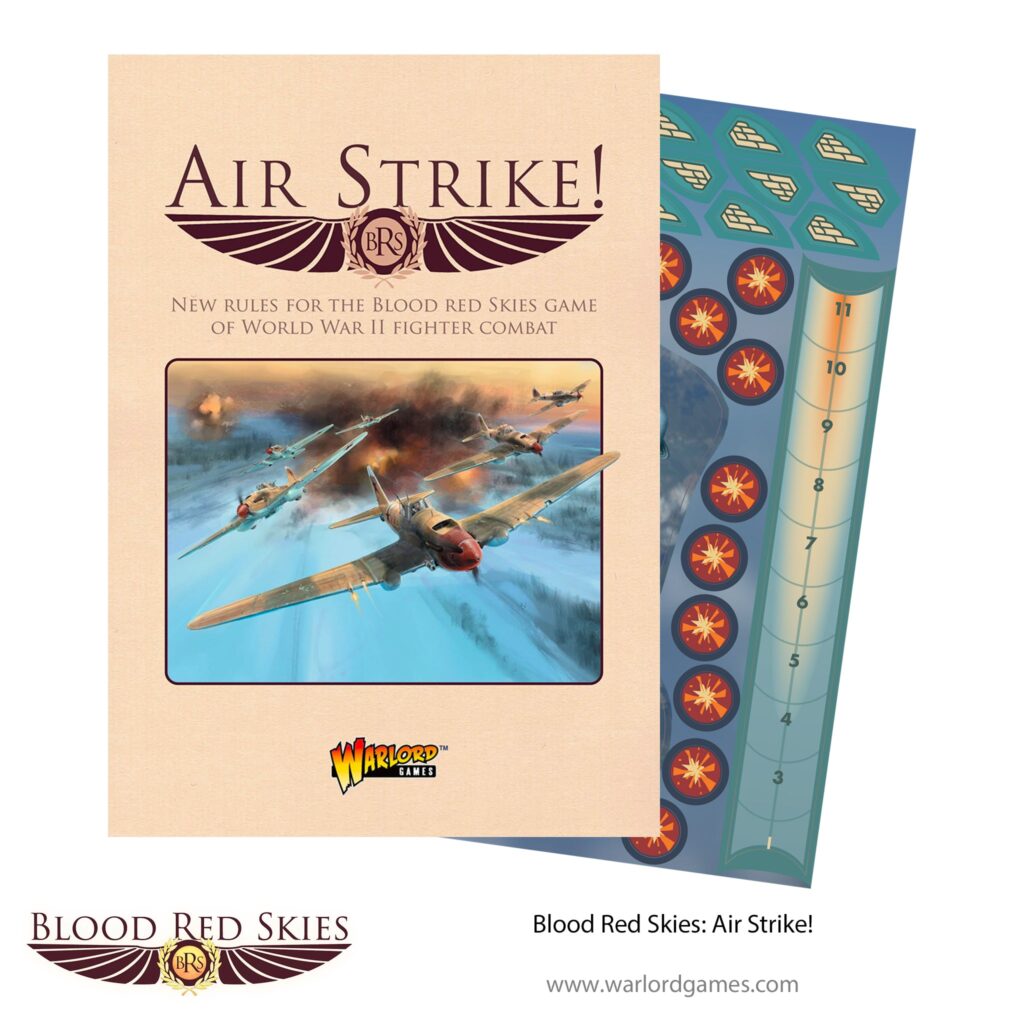
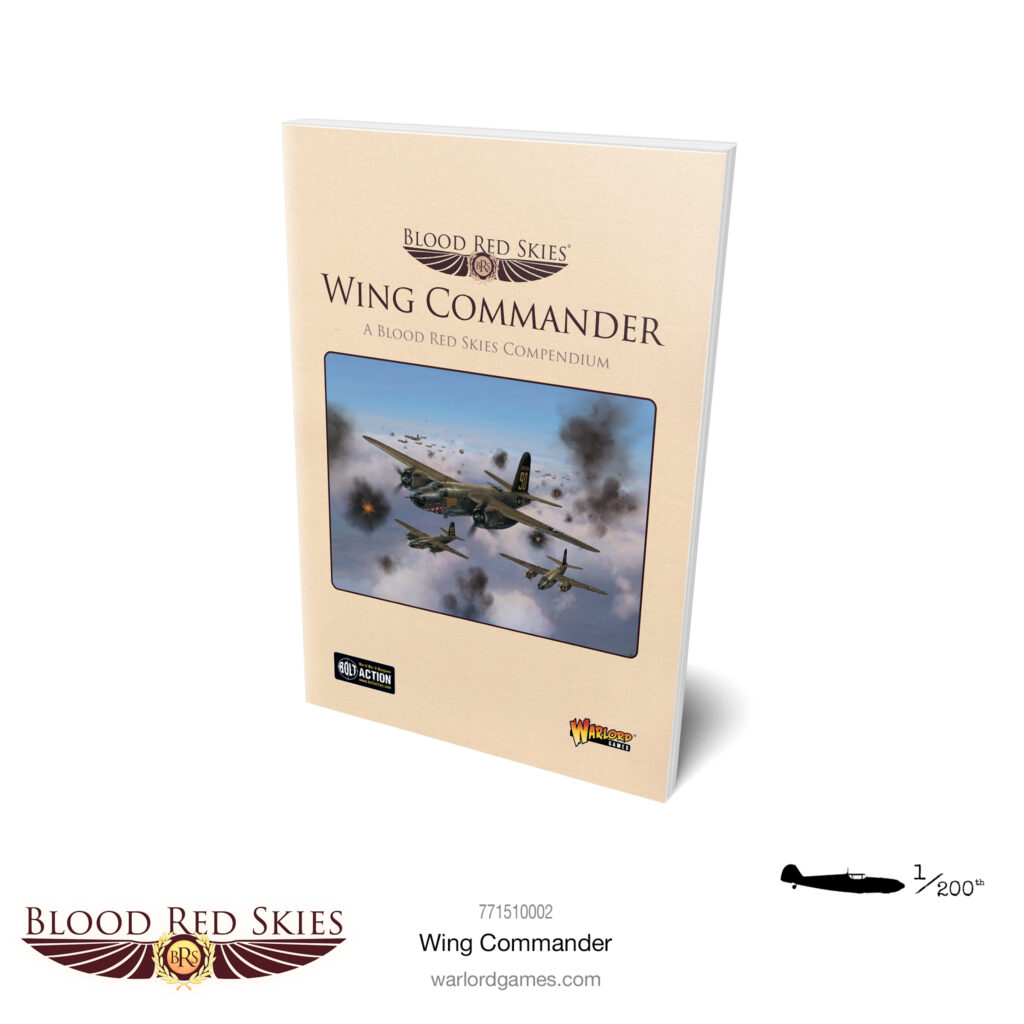
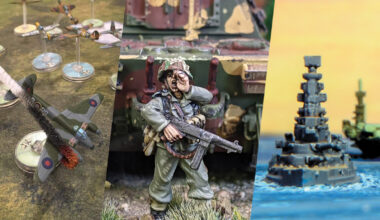
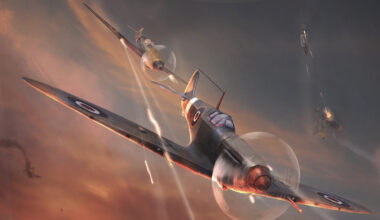
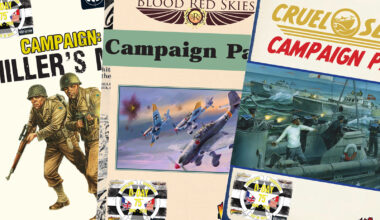
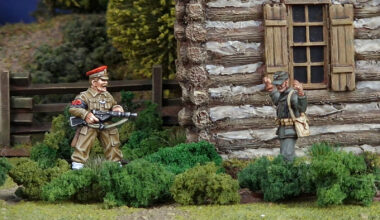
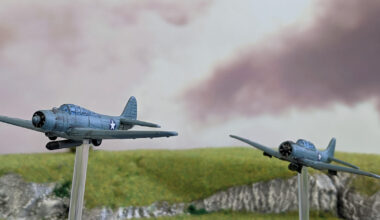
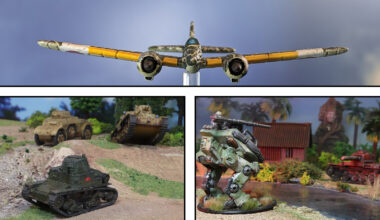
1 comment
MiG Alley is a great little supplement – brilliant intro to the jet age and for something different.
The Me262’s are a cracking job as well – very dangerous in WW2 games, and a nice “what if” for the F80’s as YP80’s over Italy!
Comments are closed.